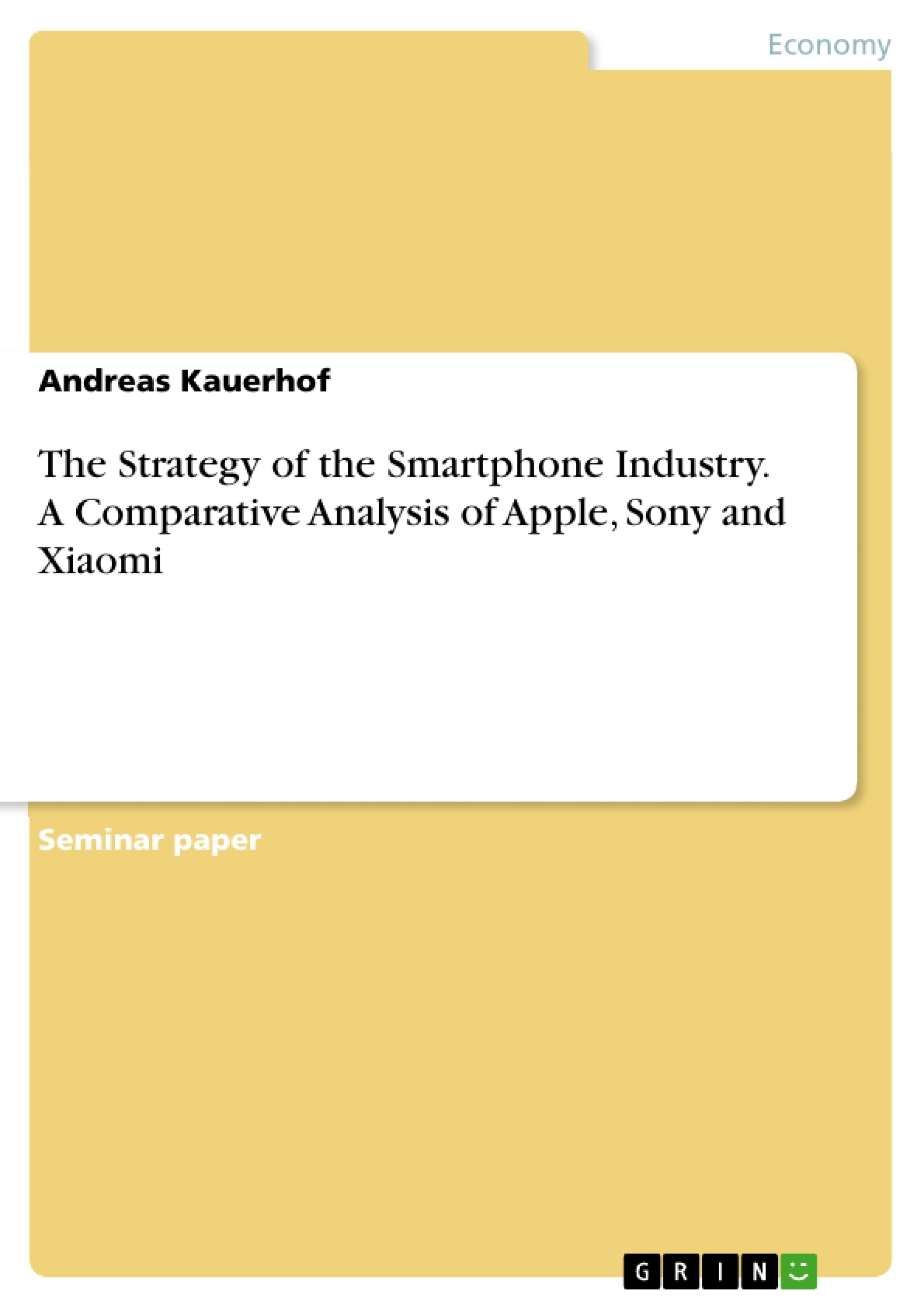Mobile phones have become an everyday necessity in peoples’ lives and the Smartphone market attracts a lot of companies and has become a highly competitive environment. Apple, Sony and Xiaomi apply different strategies to sell smartphones, as this essay demonstrates.
This assignment begins with a basic understanding of the mobile phone industry. It gives an overview of the market size, market share and the future growth projections. The following chapters use common strategic management tools to analyze the smartphone industry and its driving forces. This work also provides current data about business units with respect to sales, revenue and market shares for the core products of Apple, Sony and Xiaomi. The similarities, differences, advantages and disadvantages of each strategy are discussed in chapter three.
Apple, Sony and Xiaomi apply different strategies in their smartphone business units. The three competitors achieve different numbers in sales or profitability. Some brands seem to be more attractive for customers than others. Their disadvantages and advantages are discussed and compared here.
Inhaltsverzeichnis (Table of Contents)
- LIST OF ABBREVIATIONS
- LIST OF FIGURES
- LIST OF TABLES
- EXECUTIVE SUMMARY
- INTRODUCTION
- PROBLEM DEFINITION
- OBJECTIVES
- METHODOLOGY
- OVERVIEW MOBILE PHONE INDUSTRY
- DOMINANT ECONOMIC FEATURES OF THE MOBILE PHONE INDUSTRY
- PORTER'S FIVE FORCES INDUSTRY ANALYSIS
- STRATEGIC GROUP ANALYSIS
- KEY SUCCESS FACTORS MOBILE PHONE INDUSTRY
- COMPETITIVE STRATEGIES OF APPLE, SONY AND XIAOMI
- APPLE-BROAD DIFFERENTIATION STRATEGY
- XIAOMI - BEST-COST PROVIDER
- SONY FOCUSED DIFFERENTIATION STRATEGY
- CONCLUSION
Zielsetzung und Themenschwerpunkte (Objectives and Key Themes)
This assignment aims to analyze the competitive strategies of Apple, Sony, and Xiaomi in the highly competitive smartphone market. It provides a comprehensive overview of the mobile phone industry, including market size, market shares, and growth projections. The work utilizes strategic management tools to analyze the industry, its driving forces, and the competitive strategies of the three companies. It then compares and contrasts these strategies, discussing their advantages and disadvantages. The focus is on understanding the diverse approaches these companies employ to compete effectively in this dynamic sector.
- Strategic analysis of the global smartphone industry
- Competitive strategies of Apple, Sony, and Xiaomi
- Key success factors in the mobile phone industry
- Comparative analysis of different strategic approaches
- Assessment of the advantages and disadvantages of each strategy
Zusammenfassung der Kapitel (Chapter Summaries)
The first chapter introduces the problem definition, objectives, and methodology of the assignment. It outlines the scope and focus of the study, providing context for the subsequent analysis. The second chapter offers a comprehensive overview of the mobile phone industry, covering its dominant economic features, market size, and future growth projections. It utilizes Porter's Five Forces framework to analyze the competitive landscape and identify the key industry drivers. The chapter concludes with an analysis of the strategic groups within the industry. The third chapter delves into the competitive strategies of Apple, Sony, and Xiaomi. It examines the unique approaches each company employs to compete effectively in the market. This chapter explores the strengths, weaknesses, opportunities, and threats associated with each company's strategy and provides insights into their market positioning.
Schlüsselwörter (Keywords)
The main keywords and focus topics of this work include: mobile phone industry, smartphone market, competitive strategy, Porter's Five Forces, strategic group analysis, differentiation strategy, cost leadership, Apple, Sony, Xiaomi, key success factors, market share, growth projections, industry analysis.
- Quote paper
- Andreas Kauerhof (Author), 2015, The Strategy of the Smartphone Industry. A Comparative Analysis of Apple, Sony and Xiaomi, Munich, GRIN Verlag, https://www.grin.com/document/310660




